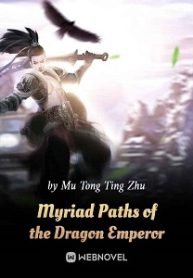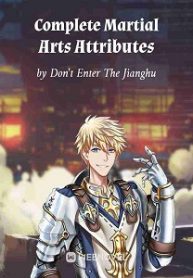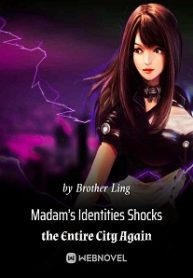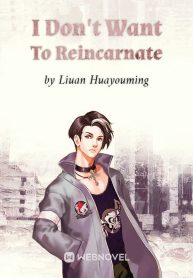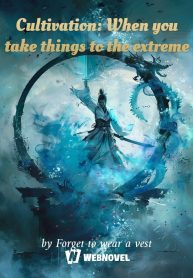Surgery Godfather - Chapter 63
- Home
- Surgery Godfather
- Chapter 63 - Chapter 63 Chapter 0061 Fighting Technique of Left and Right
Chapter 63: Chapter 0061: Fighting Technique of Left and Right
Song Zimo and Xiao Mo continued their traction for several minutes.
Professor Zhang laid his hand on the site and gently fiddled with it.
Hands-on bone setting! This is the primary technique in orthopedics, requiring the practitioner to gain a sense of the bone fragments underneath the skin and muscle – how many there are, what shape each one is, and where they are located.
Traditional bone setting techniques include: touching, joining, lifting, pressing, rubbing, pushing, and grasping. New bone setting techniques: feeling with hand, stretching and traction, rotation and flexion, lifting and pressing, swaying and touching, splitting the bone, top twisting and rotation, massage pushing and pulling.
Whether it’s traditional or modern techniques that combine eastern and western methodologies, tactile sensation is put in the first place. This is the foundation for all subsequent techniques; without it, none of the later techniques can be implemented.
The so-called hands-on technique, everything relies on the feeling and control of the hands. Our ancestors, who survived through experience, truly maximized their application of experience.
In Wuqiao, hometown of acrobatics, teacher Wu Baohe with his masterful hands could perform the acrobatic trick ‘Three Immortals Returning to the Cave’, where no one could spot any flaw. Foreigners used several high-definition cameras to shoot from different angles, and then played the footage in slow motion, hoping to find a flaw, but they just couldn’t.
Hands-on technique! It can be played to such an unsurpassable extent.
Professor Zhang sat on the chair, his chair was very stable, and his hands were even more so.
He carefully sensed the shape and condition of each piece of the radius and ulna bones underneath the skin and muscles, and he knew precisely how each piece was.
The number of people who could reach this stage in the whole country could probably be counted on one’s fingers.
Professor Zhang began to manipulate the bone pieces, returning them to their place one by one according to a pre-designed sequence.
Pieces of bone with attached soft tissues are relatively easier to reposition, just like leading an ox. There is a rope to guide it and slowly lead the ox into the pen. Free pieces of bone with no soft tissues attached would be like a free ox without a guiding rope; to get it into the pen, you can only drive it. It goes without saying which one is easier, leading the ox or driving it.
“Bend it, yes! Now straighten, over-extend it, further extend it, stop! Then return to the straight position, rotate it, slowly rotate it, good!”
Professor Zhang directed Song Zimo and Xiao Mo as they precisely followed his commands. During the movements, Professor Zhang’s hands never halted and he seized each opportunity to drive the “ox” into place.
It was an even greater skill to reposition the pieces in motion compared to repositioning them in a still state. One needed to understand how to achieve the movement, when the opportunity to reposition the bone piece would arise during that movement, and how to control this bone piece to cooperate with the movement and fit into place.
The people next door watched the screen. Although they did not fully understand what they saw, they knew they were witnessing a highly skilled technique. Cameras shot from different angles, presenting multiple angle views. Some of the students even tried to mimic Professor Zhang’s actions in the air as if they too had a patient under their hands.
“That will do!” Professor Zhang lifted his hand off Li Jingshu’s forearm: “let’s have a look!”
Inside, only Yang Ping was free. He stepped on the footswitch of the C-arm X-ray machine. An X-ray image of the forearm bones immediately appeared on the screen.
The radius had been completely reset, but the ulna had not met the requirements.
For bone fracture resetting, there are anatomical resetting and functional resetting. Anatomical resetting is to completely restore it to its pre-injury state, without any deviation. Functional resetting is to restore it to approximately its original state with a certain deviation, but this deviation will not affect your use of it, that is, it will not leave any disability.
The ulna, however, didn’t even meet the requirements of functional resetting.
Professor Zhang shook his head. He was clearly sure of it. Was it unstable?
The people next door had never seen real bonesetting techniques before. Usually, it is a simple traction and flexion for fractures of the distal radius or upper humeral fracture. It’s not a genuine example of bone setting technique.
Today, seeing this case of a comminuted and clearly displaced fracture of both the ulna and radius, the radius could be reset so well, they truly got to see real bone setting.
Professor Zhang pondered, a fracture of the ulna and the radius is not simply about resetting the ulna first and then the radius. It is necessary to take both into account as treating one could lead to compromising the other since they function as a finely coordinated whole.
“Xiao Song, your turn! Xiao Yang, help with the traction!” commanded Professor Zhang.
He wanted to swap in another person. Maybe due to his age or not having operated for a long time, his hands may not offer the same sensitivity as before. Young people tend to have more sensitive nerve endings, and they may have a higher chance of success. Moreover, he had trained Song Zimo personally and was well aware of his resetting skills.
Yang Ping took over Song Zimo’s position and held onto Li JingShu’s elbow along with Xiao Mo to maintain the traction.
Song Zimo helped Professor Zhang stand up, moved the chair back and assisted the professor in sitting down once again. Now standing in the position previously occupied by Professor Zhang, Song Zimo started the resetting procedure. In truth, he was eager to show his abilities.
He was competitive and wanted to outperform others. The stronger Yang Ping’s inability was shown, the greater he wanted to demonstrate his proficiency. Since childhood, he had been academically dominant. In his dictionary, there was no term such as ‘second place’.
A slight stir went up from the room next door.
“Does Song Zimo also know hands-on bone setting?”
“After learning with Professor Zhang for a few years, it’s not just about knowing, he’s brilliant!”
“It seems he knows how to do everything.”
“Can’t help it, since he’s so smart, he catches onto things as soon as he’s taught.”
“It seems like he’s good at basketball too.”
“Not just good, but a key player in the hospital team. We won the Medical System Basketball Championship several times, and he played a significant part in those victories.”
“Ah, how can someone be so skilled at everything? I’d be satisfied if I was this good at just one thing.”
“Forget it, comparing ourselves to others will only make us unhappy.”
Yang Ping maintained the traction force, admiring Song Zimo. This guy was truly talented, and he wasn’t bluffing.
Song Zimo placed his hand, for the ulna! Now he needed to reposition the ulna. He furrowed his brows slightly, getting himself mentally prepared and focused on what he was feeling in his hands, bit by bit.
To those around, it was hard to see much, only the careful handling of his hands, instructing his assistant to rotate, flex, and extend.
“How are we doing, Xiao Song?” Professor Zhang asked.
Upon hearing the ‘click’ sound, Song Zimo nodded, “It should be done now.”
“Let’s do a fluoroscopy,” Song Zimo said, realizing that he was the only one able to manipulate the C-arm machine, so he stepped on the switch himself.
The image appeared on the screen.
The ulna was repositioned completely, but the radius was not yet repositioned.
Despite this, everyone couldn’t help but marvel. They managed to manually reposition such a fragmented fracture.
Professor Zhang shook his head, it still wasn’t satisfactory. Further attempts at repositioning might not guarantee success.
Professor Zhang analyzed that the previous attempts at repositioning might have damaged the soft tissue attachments of some bone fragments, leading to instability. They were stretching themselves too thin.
Too many attempts at manual repositioning could lead to ossifying myositis, where certain areas of the muscle calcify and turn into bones. This complication may sometimes lead to severe functional disability and residual impairment.
Professor Zhang once again examined the CT scans on the lights and said, “Let’s go for surgery. Call Director Han–”
“Stop!” The tears in Li Jingshu’s eyes spilled over her cheeks.
“Please give it another try!” Li Jingshu pleaded.
Professor Zhang shook his head, “We can’t try again. The fracture is unstable and it’s hard to cater to both sides. Attempting again would only increase the damage.”
Song Zimo looked a bit dazed, staring at the illuminated radiographs. Professor Zhang told him, “To successfully reposition this type of fracture, a person needs to use both hands simultaneously. The left hand repositions the radius while the right repositions the ulna, or vice versa. I could have done it before, but it’s been a long time since I performed this kind of manoeuvre.”
“Can’t the two of us work together? Reposition simultaneously. You handle the radius and I handle the ulna?” Song Zimo asked tentatively, unwilling to give up.
But Professor Zhang shook his head again, “It’s not possible. The hands need to simultaneously sense and guide the bones’ movements based on that sensation. Two individuals can’t unify these sensory perceptions, let alone command the movements. Furthermore, both hands need to work in perfect harmony. How can two persons possibly collaborate seamlessly? It’s as difficult as trying to play the same unknown piece on a piano with four hands.”
Seeing Song Zimo’s determined expression, Professor Zhang explained, “If this happened thirty years ago, I could have repositioned it with both hands simultaneously. But, it’s not as simple as just getting both hands to operate at once. Each hand needs to perform completely differently according to a pre-planned strategy, just like writing different words with each hand simultaneously. It’s easier said than done. It’s a highly difficult procedure, and I can’t do it anymore. We should move forward with surgery.”
“Simultaneous left and right?” Song Zimo thought of a term.
Professor Zhang nodded, “Correct!”
Director Ouyang might have finished a surgery as he had time to come and check in on them.
His graduate student immediately reported to him, “We need to perform simultaneous left and right.”
Upon hearing these words, Director Ouyang was reminded of a memory from over a decade ago. His senior had refused surgery for a comminuted fracture of the radius and ulna with significant displacement. When they sought help from a traditional Chinese medicine practitioner, the attempt to reposition the fracture failed, forcing them to seek help from their mentor.
The mentor managed to arrange for him to see a centenarian in Beijing immediately. Ouyang had accompanied his senior on that trip.
The centenarian performed the simultaneous left and right operation, managing to anatomically reposition all those displaced bone fragments. This left Director Ouyang so astounded that he replayed the scene in his mind for several days.
Director Ouyang often shared this story with his graduate students, which is why they were familiar with the term ‘simultaneous left and right’.’
Hearing this interesting term, a doctor standing nearby couldn’t help but ask, “You mean Zhou Botong’s simultaneous left and right technique?”
The graduate student responded, “It’s almost the same. Each hand independently manipulates the bone fragments, following different paths. Plus, they need to coordinate with each other, managing both sides equally. The difficulty level is extremely high. Although it sounds simple to position the bone by hand, the real skill is in the hands.”
“Ah, I think Professor Zhang should be able to do it. He studied this technique extensively in the past and has even learned from numerous masters.”
“He might have been able to in the past. But as he hasn’t used this technique in a long time, we can’t be sure if he can still do it.”


